
When planning an outdoor renovation, one of the first questions that comes to mind is, "How much does composite decking cost?" As composite decking continues to gain popularity for its durability and low-maintenance benefits, understanding the associated costs is crucial for a successful project. From the type of materials used to the complexity of your deck design, several factors can impact your final bill. For example, adding drainage tiles to your deck can help manage water runoff, but it may also increase the overall cost.
In this guide, we’ll explain everything you need to know about composite decking costs, helping you make informed decisions and budget effectively for your next deck installation project.
Factors Affecting Composite Decking Costs
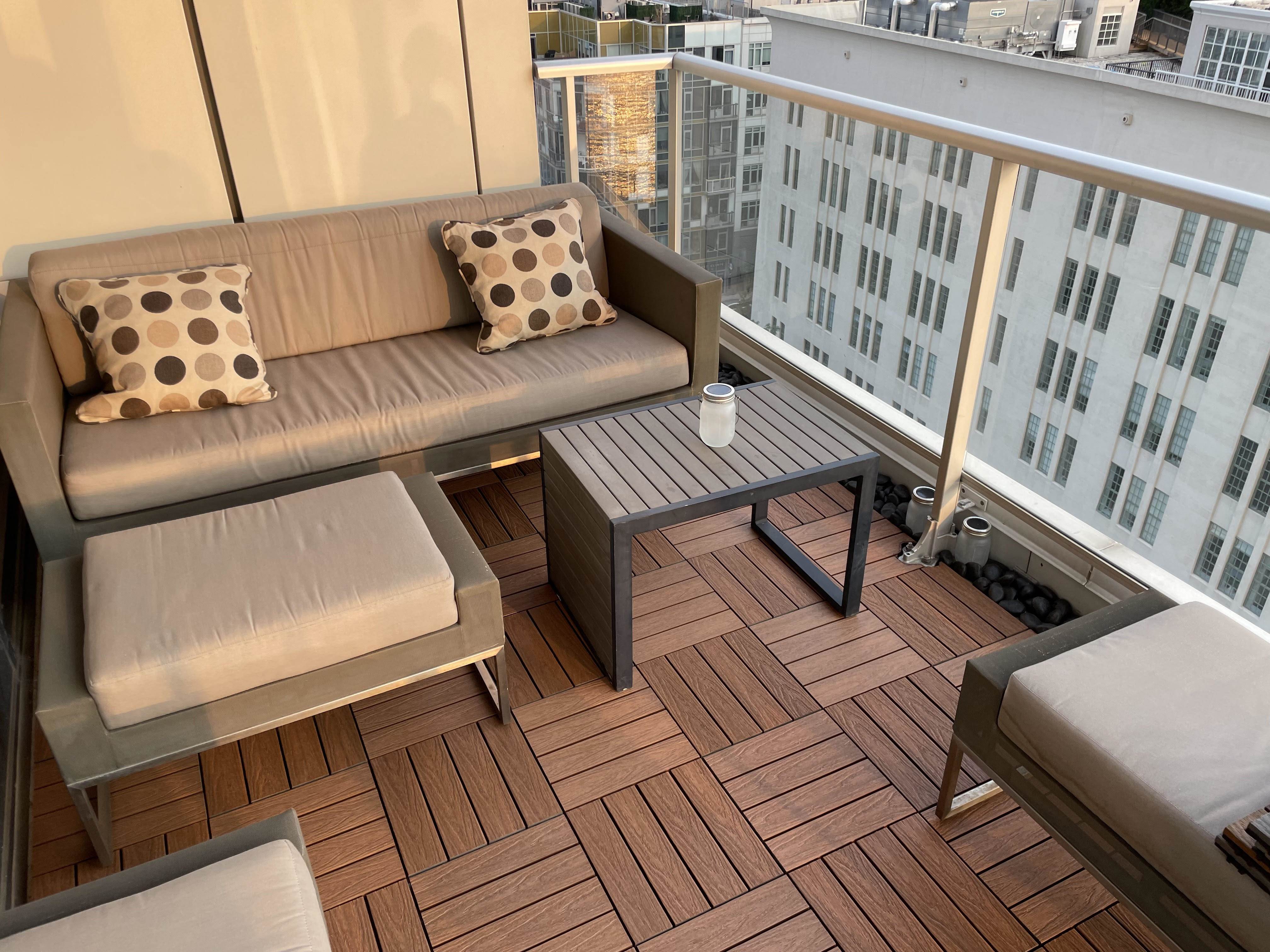

When it comes to composite decking, several key factors can influence the overall cost of your project. These include:
- Materials: The type and quality of composite deck boards you choose play a significant role in determining the cost. Higher-end materials like capped composite decking tend to be more expensive but offer added benefits in terms of durability and aesthetics.
- Brand: Popular brands like Helios Deck Tiles, Trex Decking, and TimberTech Decking come with varying price points depending on their product lines. Some brands offer budget-friendly options, while others focus on premium quality.
- Design Complexity: The more intricate your deck design, the higher the cost. Features like multi-level decks, curved edges, and built-in seating add to the complexity—and the price.
- Installation Fees: Installation costs can vary widely, whether you opt for professional installation or decide to do it yourself. Professional deck building often comes with higher labor fees, while DIY projects might require additional tools and materials.
Material Costs
The cost of composite decking materials is typically calculated per square foot. On average, you can expect to pay between $16 and $32 per square foot for composite decking materials alone, with total installed costs ranging from $40 to $80 per square foot. The variation in price depends on the brand, quality, and type of composite material you choose.
- Trex Decking Cost: Trex, a popular brand, offers composite deck boards ranging from $5 to $15 per square foot, depending on the product line. Higher-end lines like Trex Transcend tend to be pricier due to their enhanced durability and aesthetic appeal.
- TimberTech Decking: TimberTech decking prices range from $6 to $13 per square foot, with premium options like TimberTech AZEK on the higher end due to their superior quality and longer warranties.
When comparing these costs with traditional wood decking, which usually ranges from $2 to $5 per square foot, it's clear that composite materials can be more expensive upfront. However, the long-term benefits often outweigh the initial investment. For example, the steps to clean composite decking mainly involve just a simple wash with soap and water, compared to the extensive maintenance wood decks require.
Installation Costs
Installation costs can significantly impact your total deck cost. Professional installation fees typically range from $24 to $48 per square foot. This means that labor alone could cost between $4,800 and $9,600 for a 200-square-foot deck. Elevated decks, multi-level designs, or decks with custom features will incur higher labor costs due to their increased complexity.
On the other hand, if you’re a DIY enthusiast, you can save on labor costs but may need to invest in additional tools and materials. Learning how to install composite decking properly is crucial for a successful DIY project, ensuring that your deck is both safe and long-lasting.
Types of Composite Decking and Their Costs
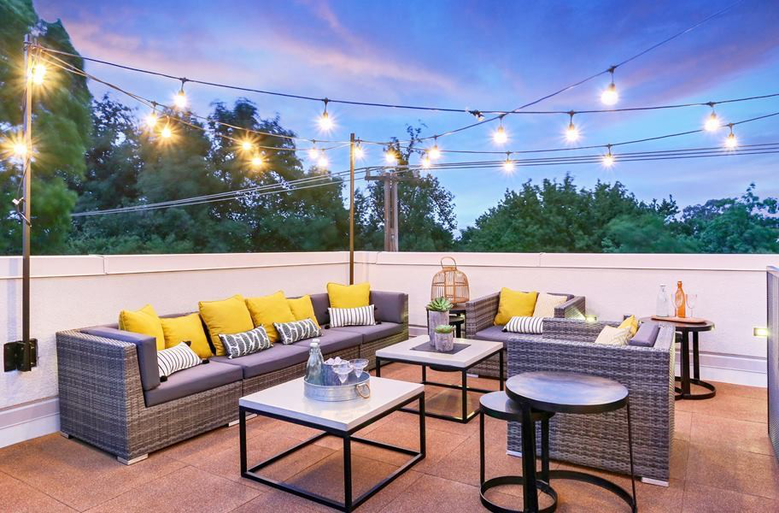

Composite decking comes in various types, each with its own cost implications. The most common types include capped composite decking, uncapped composite decking, and composite deck tiles.
Capped Composite Decking
This type of decking features a protective outer layer, or cap, which helps resist fading, staining, and scratching. Capped composite decking generally costs between $4 and $12 per square foot. While more expensive, it offers superior durability and requires less maintenance over time.
Uncapped Composite Decking
Uncapped decking lacks the protective layer found in capped products, making it more susceptible to wear and tear. However, it is typically more affordable, with prices ranging from $3 to $7 per square foot.
Composite Deck Tiles
Composite deck tiles are a versatile and cost-effective option for resurfacing an existing deck. Depending on the brand and style, prices for composite deck tiles typically range from $7 to $15 per square foot.
To learn more about these types and their benefits, you can check out our blog about what is composite decking.
Capped vs. Uncapped Composite Decking
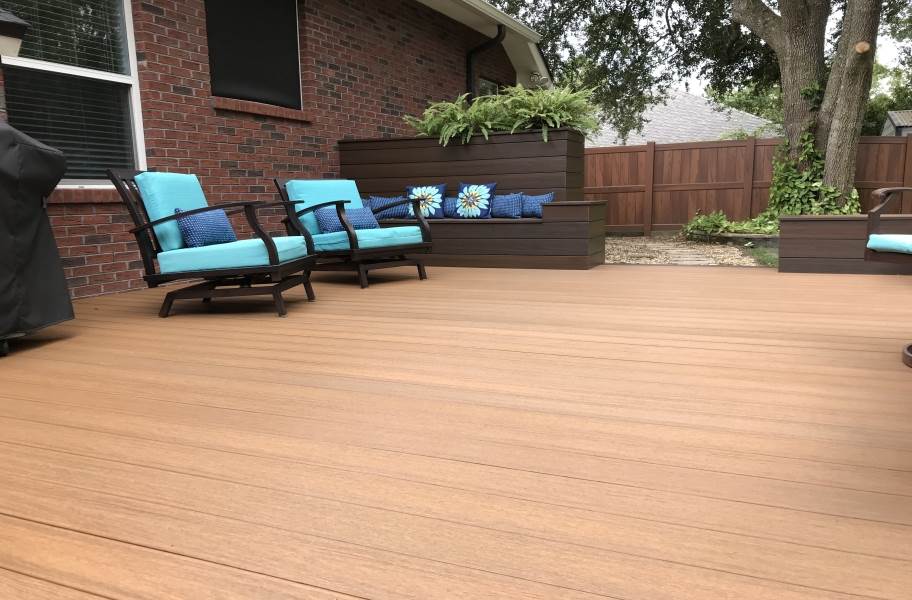

Understanding the difference between capped and uncapped composite decking can help you decide which is best for your project.
- Capped Composite Decking: Capped composite decking is more resistant to environmental factors and daily wear. The protective cap shields the decking material from UV rays, moisture, and stains, making it an excellent choice for areas with high exposure to the elements. While the upfront cost is higher, the long-term benefits often justify the investment.
- Uncapped Composite Decking: Without a protective cap, uncapped composite decking can be more vulnerable to fading and staining. However, it’s a more budget-friendly option and can still offer a durable, low-maintenance surface for your deck.
Additional Features and Their Costs
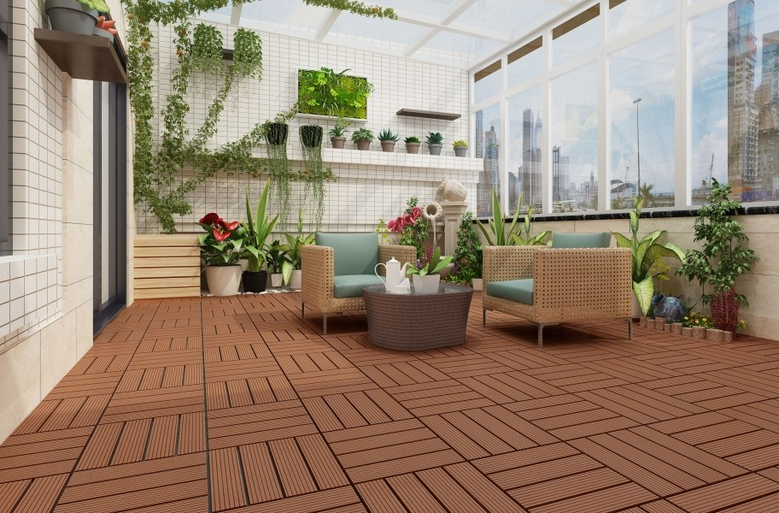

Adding features like railings, lighting, and custom designs can significantly increase your decking cost. These enhancements not only improve the functionality of your deck but also add to its aesthetic appeal.
- Railings: Depending on the material and design, deck railings can cost between $20 and $60 per linear foot. Composite railings tend to be more expensive but offer better durability compared to wood or metal options.
- Lighting: Adding deck lighting can range from $80 to $300 per fixture. Solar-powered lights are generally more affordable and easier to install, while wired options may require professional installation.
- Custom Designs and Accessories: Incorporating custom design elements like curved edges, built-in seating, and planters can add anywhere from $1,000 to $5,000 to your project, depending on the complexity and materials used.
Long-Term Cost Savings
One key advantage of composite decking is the potential for long-term cost savings. While the initial investment may be higher than traditional wood decking, the reduced maintenance costs and longer lifespan of composite materials can save you money in the long run.
Composite decking requires minimal upkeep compared to wood decks, which need regular staining, sealing, and repairs. Typical maintenance for composite decks includes occasional cleaning with soap and water, costing around $50 per year. In contrast, maintaining a wood deck can cost several hundred dollars annually in materials and labor.
Comparing Composite Decking to Other Decking Materials


When evaluating the cost of composite decking, it’s essential to compare it with other popular decking materials, such as wood and PVC.
- Wood Decking: While wood decking is initially less expensive, typically ranging from $2 to $5 per square foot, it requires ongoing maintenance that can add up over time. The lifespan of a wood deck is also shorter, often requiring replacement within 10 to 15 years.
- PVC Decking: PVC decking is similar in cost to composite decking, with prices ranging from $5 to $12 per square foot. It’s highly resistant to moisture and mold but can be less visually appealing and more prone to fading.
Cost-Benefit Analysis
When considering the total cost and benefits of composite decking versus other materials, composite decking often comes out ahead. Although the initial cost is higher, the long-term savings on maintenance and repairs, paired with the extended lifespan, make it a wise investment for many homeowners.
For instance, while a wood deck may require $500 annually in maintenance, a composite deck might only need $50, leading to substantial savings over 20 years.
Tips for Budgeting Your Composite Decking Project
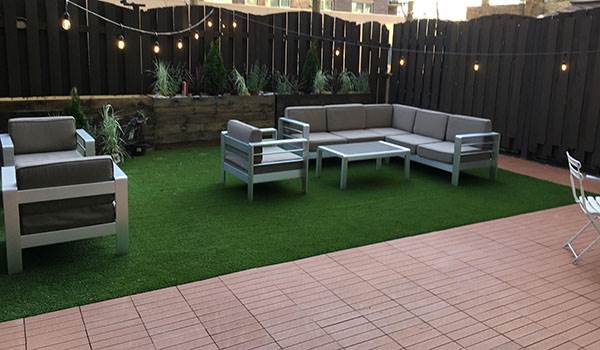

To ensure you stay within budget, consider the following tips:
- Research and Compare Prices: Take the time to compare prices between different brands and retailers. Look for sales or discounts on composite deck boards, especially during off-peak seasons.
- Get Multiple Quotes: If you’re hiring a contractor, get multiple quotes to ensure you’re getting the best deal on labor. Be sure to ask about any hidden fees or additional costs that could arise during the project.
- Plan for Contingencies: Set aside extra funds for unexpected expenses, such as additional materials or design changes. A 10-15% contingency budget is typically recommended for home improvement projects.
Ready to Invest in Composite Decking? Here’s What You Need to Know
While composite decking may have a higher initial cost than other decking materials, the long-term benefits make it a worthwhile investment.
To get started on your project, explore Flooring Inc.'s wide range of composite decking options and find the perfect match for your needs.
Sources
Accuracy is important to us. That’s why all of our content is vetted by flooring experts with more than 13 years of combined experience in the field. We also work to source information directly from flooring manufacturers.
Homeguide. How much does composite decking cost?. https://homeguide.com/costs/composite-decking-prices
Forbes. How Much Does Composite Decking Cost?. https://www.forbes.com/home-improvement/outdoor-living/composite-decking-cost/


